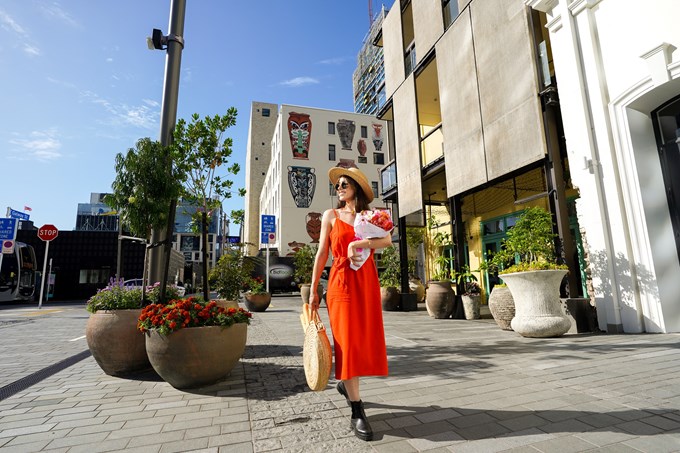Britomart is a place where past and future blend, where renovated dockside warehouses jostle with sleek new architecture, where laneways thriving with hospitality and shops flow into plant-filled streets and squares.
It was the team at Cooper and Company who saw the promise of this area over 20 years ago and established an agreement with Auckland Council which has seen the Britomart precinct become an exemplar of contemporary urban renewal.
The third and final section of Galway Street – completing a stylish east-west connection on the cityside of the precinct – was opened by Auckland Council in March. The finished street completes another chapter in the exciting regeneration of Britomart.
We asked Matthew Cockram, CEO of Cooper and Company, about the evolution of Britomart and where to from here:
- How would you describe the development journey so far, after helming almost 20 years of development for the Britomart Precinct?
We knew Britomart had enormous potential but it was hard to see that to begin with: 20 years ago Britomart’s heritage buildings were largely abandoned and barely usable, and the space at the centre of the precinct was a gravel car park. We know that people like to gather in central city spaces if those spaces make them feel welcome and valued, and if they offer good options for their work and leisure time, whether that be opportunities for connection with other people through eating, drinking and shopping, or just sitting in the sun on the lawn in Takutai Square. We take a long-term view, so we’ve tried not to rush things, which has given us time to ensure that each new element – whether that be a new building like The Hotel Britomart or the refurbishment of older ones, such as the recently reopened Hayman Kronfeld Building on Galway Street – is sustainable in economic and environmental terms.
- What feedback have you received from local residents, international visitors, business leaders or architects?
It’s usually very positive. There’s an inherent dynamism between the heritage buildings in Britomart and the newer elements we’ve added that are nice to be around. And we’ve focused a lot on the provision of high-quality public space, which includes Takutai Square and the Te Ara Tahuhu pedestrian walkway, as well as the shared spaces along Galway Street. But it isn’t just about setting these spaces up and watching magic happen – we have dedicated teams who work every day to keep our public areas clean, safe and welcoming. Our operations team, for example, puts out tables, chairs and beanbags every day in Takutai Square for people to use as they wish. They also maintain all the plants and flowers in the precinct. We have ever-changing displays of public art, market days every Saturday, food trucks in the square every Wednesday lunchtime. It all takes effort, but that effort is rewarded when we see how much people enjoy those things.
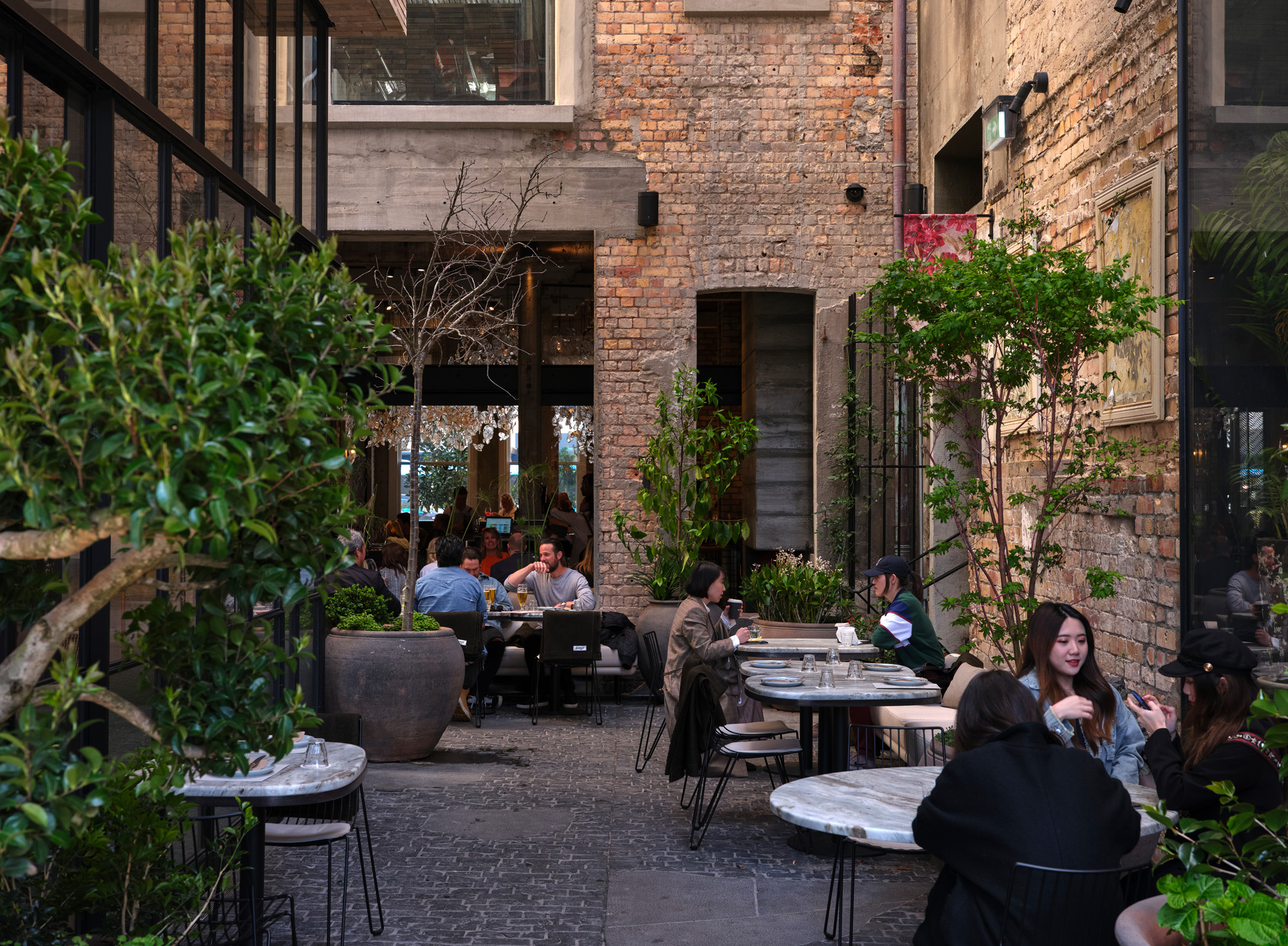
Tuawhiti Lane, Britomart, Photo By Samuel Hartnett
- How has the history of the area and individual buildings been considered in the development of the area?
Britomart’s heritage is ever-present, and we’ve developed a close working relationship with the heritage team at Auckland Council and with Heritage New Zealand so we can ensure we’re adapting these precious buildings for contemporary use without erasing their heritage features. Recently we had new office occupants move into the upper floors of the century-old Hayman Kronfeld Building – it’s excellent to see how much they appreciate the heritage fabric of their offices, which we’ve also been able to refurbish to 5 Green Star standards, with all the amenities a contemporary office requires. We’re also conscious that we’re on land that was once part of the Waitematā Harbour, which we acknowledge through Te Rou Kai, the artwork by Ngāti Whātua artists led by Bernard Makoare: it’s the fountain in Takutai Square that mimics that pop-jet actions of pipis that were once harvested from the shore here by mana whenua.
- How has Auckland Council’s City Centre Masterplan since 2012, influenced Cooper and Company’s development in the area?
It’s a really helpful guide to where we all hope to get to as a city. But we also – and this is a collective ‘we’, as the plan refers to the whole of the central city – have to keep an eye on progressing the opportunities identified in the Master Plan and not stand still. If anything, the current situation, with the challenges we’re seeing in Queen Street around crime and cleanliness, reminds us that the need for ambition and change in the central city is more urgent than ever. That includes keeping the vision of the Master Plan alive, but also close attention to the daily basics of safety and cleanliness, because if those things aren’t taken care of, then that limits the potential to achieve the goals of the Master Plan.
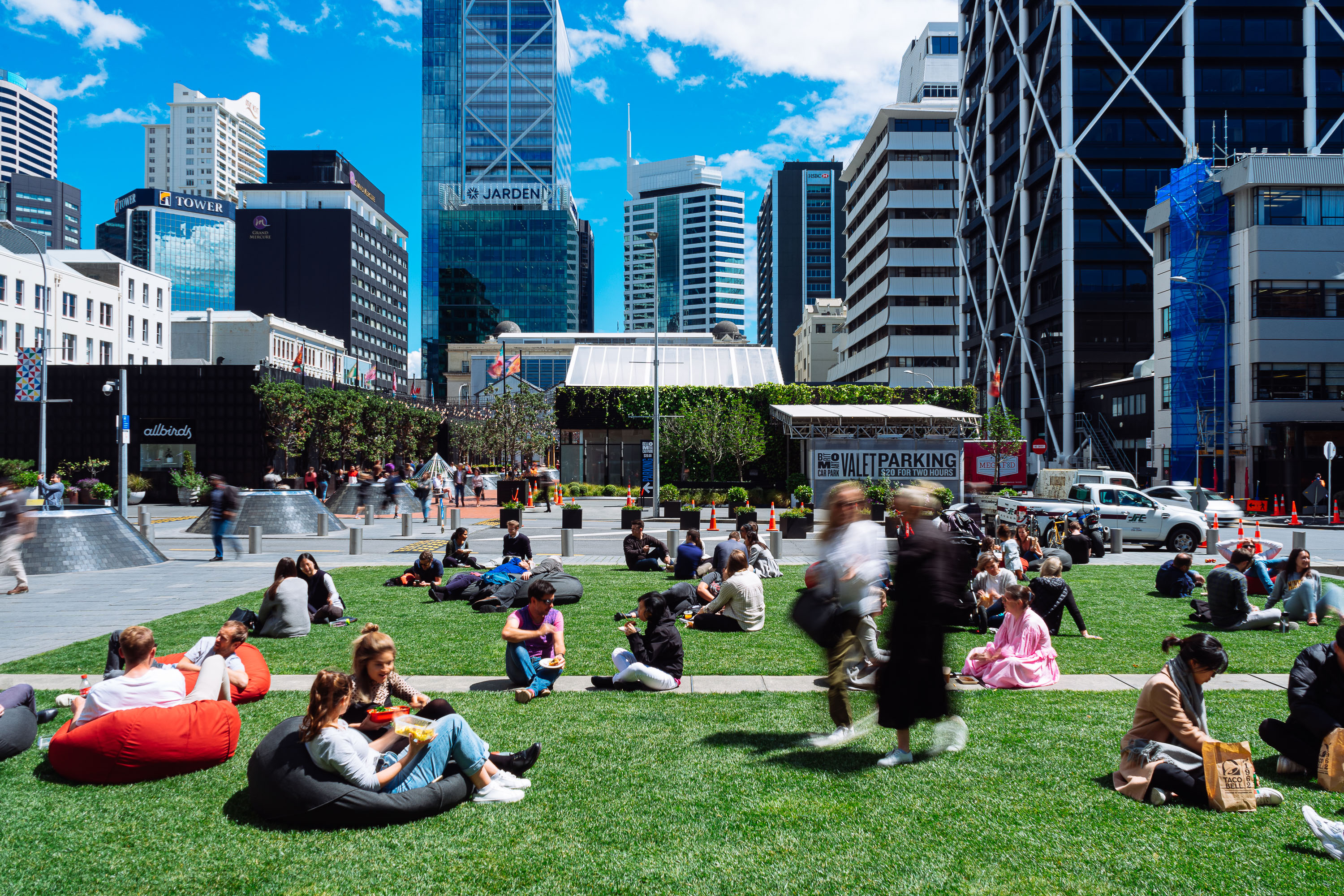
The Lawn In Takutai Square, Britomart, Photo By Joe Hockley
- How did the streetscape upgrades contribute to the experience of the precinct?
The streetscape upgrades are a terrific invitation to pedestrians to wander and linger – they’re a welcoming gesture, something that makes it clear that these are spaces for people. We’re really pleased with how the Galway Street shared space connects so well with Te Komititanga. What’s great about these shared spaces is the way people start intuitively using them as soon as they open.
- How did Cooper and Company work in with the Auckland Council group, CRL, utilities, and was that a fruitful process?
Over the years we’ve developed really positive working relationships with all of those organisations. The results speak for themselves. There are always issues to confront in coordinating large projects like this, but together we’ve worked out ways of doing them as well as possible.
- From your perspective, what is the future potential for this part of the city centre where Queen Street meets the sea?
A better connection with the waterfront will be transformative for the downtown area. At the moment the Waitematā is tantalisingly close but still too difficult to access. Achieving this is not something within our remit, but I think it would benefit the entire city enormously if the connection of this part of town to the harbour could be amplified.
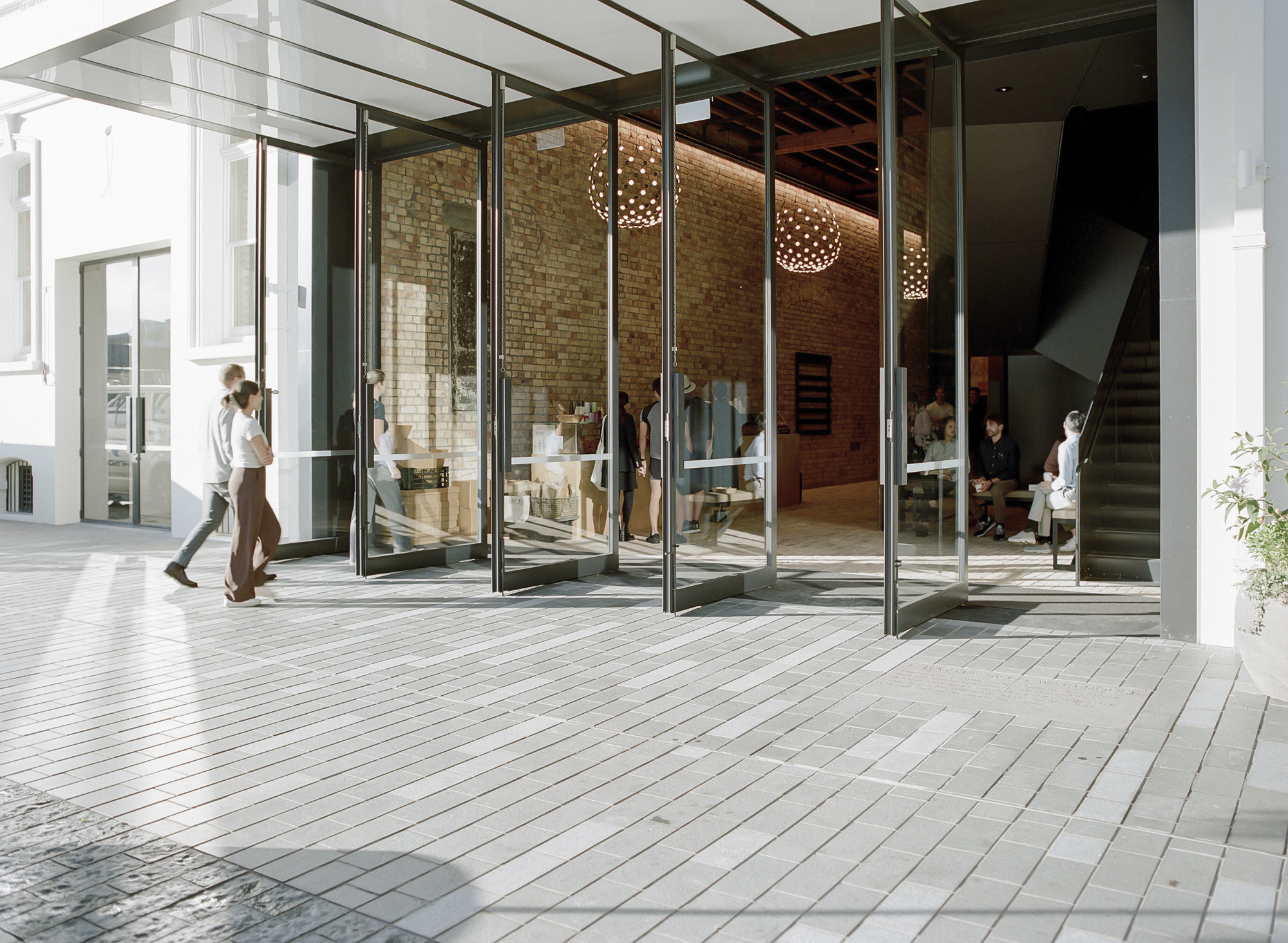
Newly opened Galway Street. Credit Mary Gaudin
- What has been your experience, and the experience of your retailers/hospitality businesses, navigating through the economic shocks of Covid restrictions?
Things are really humming for many operators now, but that doesn’t mean we should forget how difficult the last three years have been for all of them. Obviously, we need the good times to continue so that these businesses can feel confident enough to make more investments in this area for the future. In Britomart’s case, we worked with closely with each of our lease partners throughout the pandemic – and it’s a tribute to their skill and tenacity that the vast majority of them made it through.
- How have the recently completed Te Komititanga square, restored historic CPO, renewed downtown and Queen Street upgrade contributed to the experience of visitors and operators in the Britomart precinct, which appears to be back to full vibrancy?
I think the new spaces are terrific, and it’s also a huge relief after years of construction activity – from the sea wall upgrade and revamping of Quay Street to the reopening of the CPO Building – to see people enthusiastically using the city centre again without construction mess being in the way. Businesses are operating well again, and the central city is looking good, but we can’t be complacent: I keep reading stories of how central city areas in the US in particular are facing enormous, almost existential challenges at the moment, so we need to be mindful of those situations and continue to work hard to prevent them from occurring here.
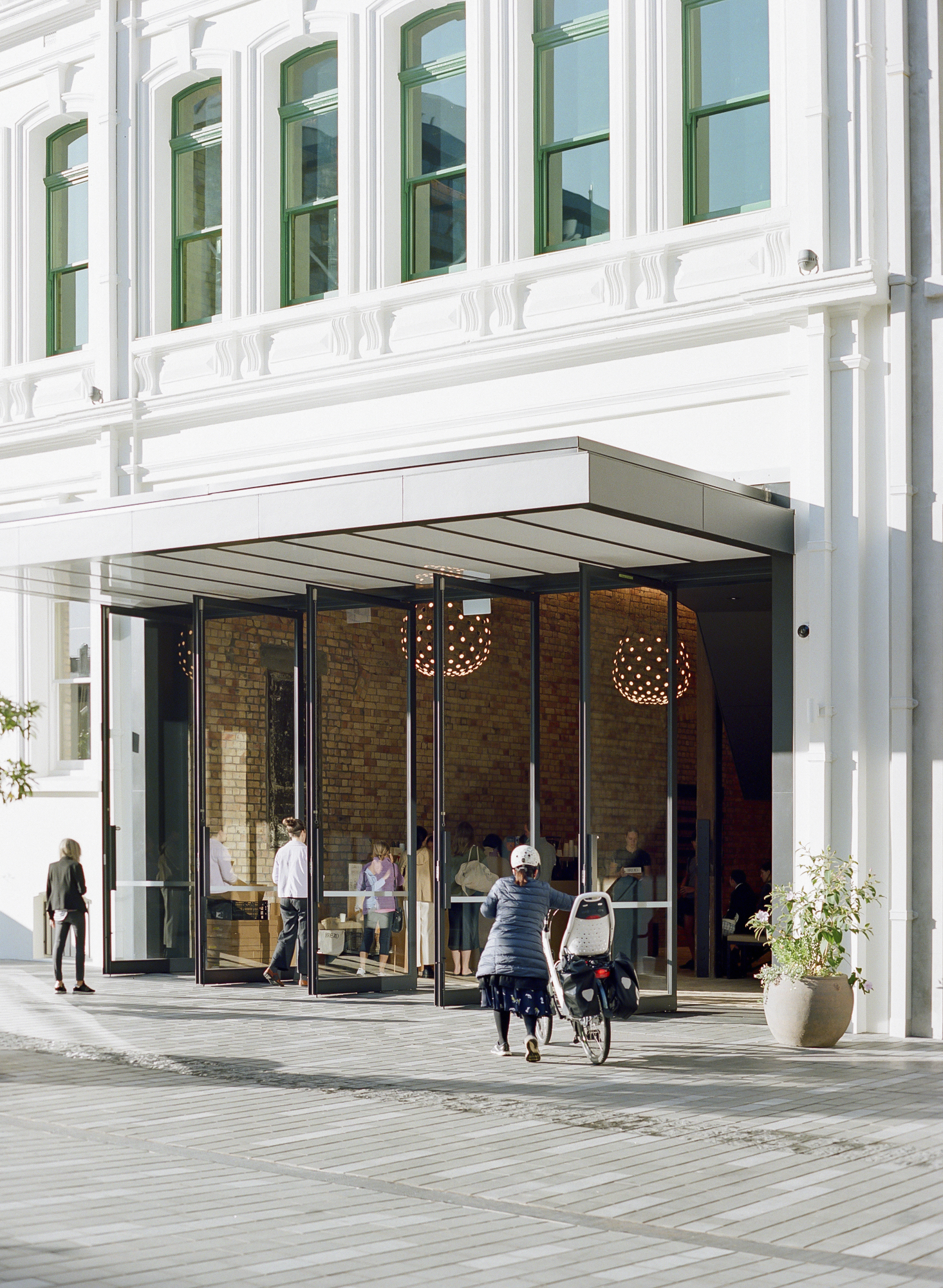
Newly opened Galway Street. Credit Mary Gaudin
- What are some of the exciting events and activations that people can look forward to in the Britomart precinct this year?
Next week we’re pleased to be working with the Auckland Writers Festival to present Streetside: Britomart on Friday 19 May – it’s a free series of pop-up readings and performances in five spaces around Britomart that I think is going to be fun and engaging. And we’re also looking forward to Matariki, when we’ll have a full day of performances and market stalls in Takutai Square to celebrate the public holiday, as well as lunchtime kapa haka performances throughout the two weeks of the festival. These special events are great, but I also enjoy the fact that every Wednesday we have a DJ and food trucks in Takutai Square – on a sunny day it’s always pleasing to see so many people gathered on the lawn enjoying the weather.
- What is next for future of the Britomart precinct?
Right now we’re doing some interesting research on the future of work – what is the purpose of an office now that flexible work is so much more possible? The answers we’re getting from the experts are interesting – and many of them tie back to work’s social purpose and our need to connect with each other in person. A lot of research shows how good workplaces can provide the interactions that underpin mental wellbeing. All our work at Britomart has, in a way, been about providing high-quality environments that make people want to connect in person, and this research is showing that while we can always improve, this approach is as relevant as ever.
- In a sentence, how do you envisage Auckland’s city centre in ten years’ time?
I really hope by that time that we can say we’ve collectively created a city centre that people from Auckland and all over the world can feel welcome in and proud of – that it’s a magnet for people, a place they unequivocally want to be in.
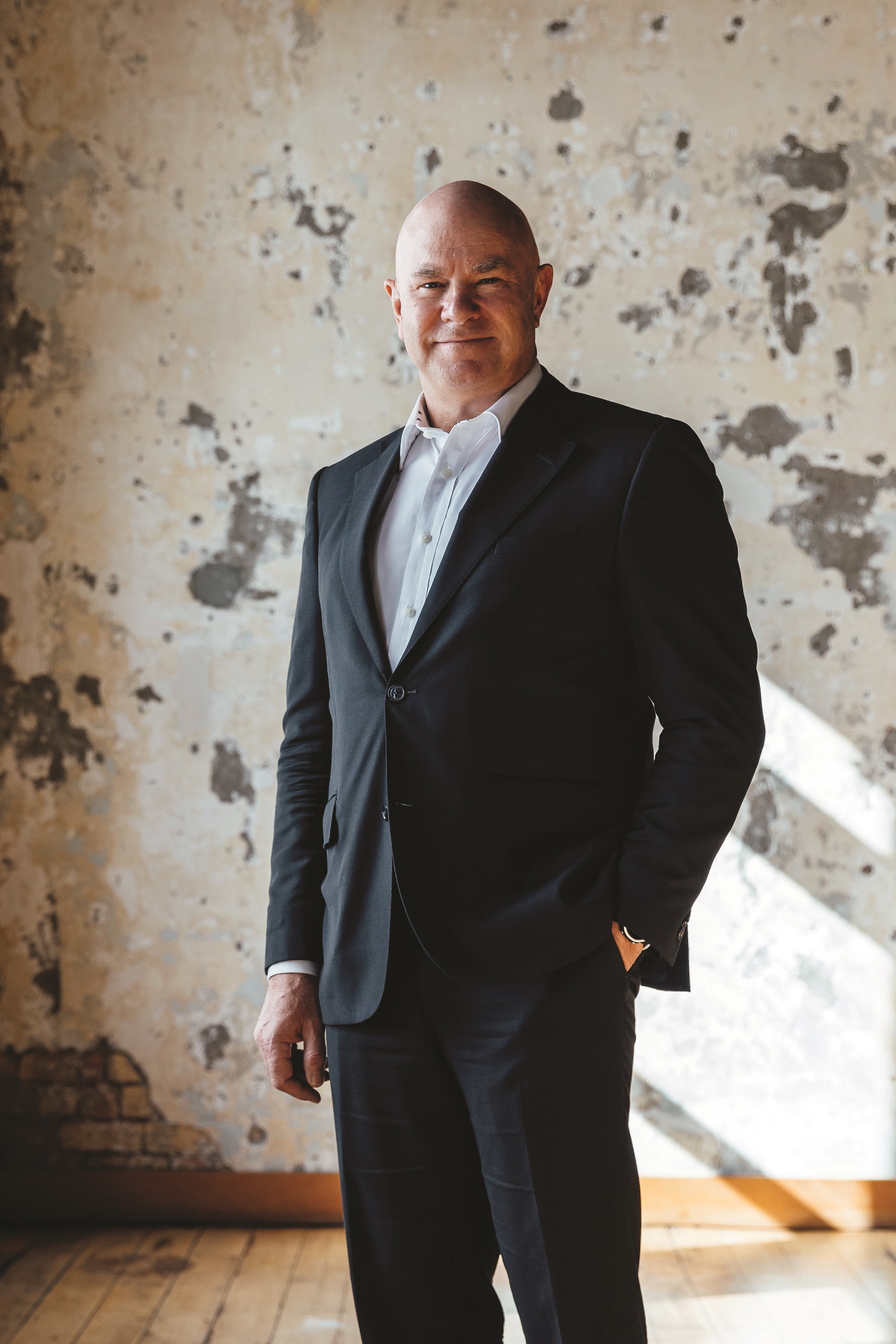
Matthew Cockram - Cooper And Company
Matthew Cockram is CEO of Cooper and Company. This Q&A is part of an occasional series shining light on how Auckland Council’s City Centre Masterplan is helpful for the private sector when scoping and planning their projects. This is not an endorsement or paid partnership.
For further Q&A in this series click here and here.
And read more about Galway Street and four other historic laneways here.

